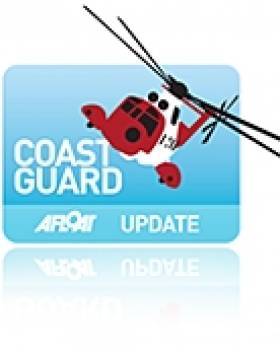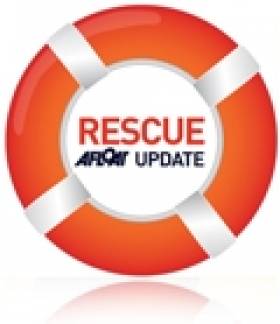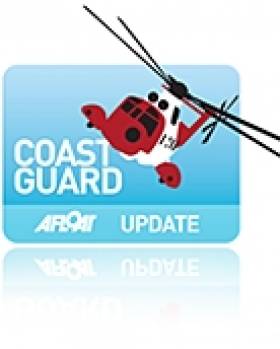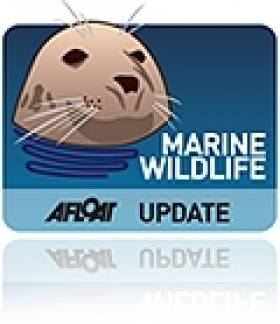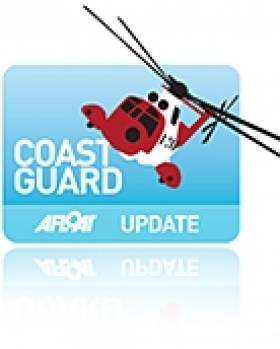Displaying items by tag: Kerry
Nin O'Leary Heads West on Kitesurfing Expo
#KITESURFING – So this is what Royal Cork Yacht Clubs' finest get up to in the closed season! A top class crew took to the air at the weekend when Triple all Ireland Sailing Champion Nicholas O'Leary led four people, two cars, six kites, five boards, 110km west on a road trip to Castlegregory, Kerry on a Kitesurf trip.
From Brian Carlin's video you can see conditions looked ideal with a six metre swell and 15-20 knots of breeze and lovely winter sunshine!!
Safari Boats Order Boosts Kerry Boat Building Firm
Kerry Boat-builder O'Sullivan's Marine (OSM) is bucking the trend in the depressed marine industry. The Tralee firm have a busy order book and report strong demand for its traditional lake boat marque but it also has interest in more exotic boats too for the emerging nature tourism market.

Tried and tested, the new Safari boats are ready for Lee Valley
The first of the orders processed in Tralee is the supply of four Pioner Multi boats with Motor Guide 24v Electric Outboards for the local Lee Valley Development, a new eight hectare (20 acre) eco-tourism development comprising a Nature Park. The four boats will be used for safari-style boat rides.
'We carried out water trials yesterday, all is in order and the fully fitted out boats are being delivered this week', says managing director Brian O'Sullivan.

OSM's Brian O'Sullivan with one of the new Pioner boats
OSM, a member of the Irish Marine Federation, is also supplying two lake boats to Creeslough Angling Association in Donegal. Six Irish built boats have also been ordered by Dunfanaghy Angling Association in Donegal. Five more lake boats are also going to Waterville, Co. Kerry. All orders are for November delivery! Recession? What recession?
OSM have a selection of used craft on the boats for sale website. See them here
Irish Vessels Asked to Keep Lookout for Missing Yacht
Ships off Ireland's south and west coasts have been asked by the French coastguard to keep a lookout for a yachtsman who has gone missing on a transatlantic voyage.
In a report that has echoes of missing yacht The Golden Eagle - which sailed into Kerry after an Atlantic crossing from Bermuda many days after schedule - RTÉ News says that the 12-metre yacht La Galatee left French Guiana on 5 August sailing for St Malo in France, but the French coastguard has lost contact with the vessel.
No air and sea searches are being considered at this time, but Irish Coast Guard stations are broadcasting alerts and requests for sightings of the yacht.
25 Years of Saving Lives in Ballybunion
Ballybunion's Sea and Cliff Rescue Service celebrated its 25th anniversary with an open day at its headquarters last weekend, The Kerryman reports.
The day also saw the unveiling of a special plaque from Water Safety Ireland recognising the rescuers' service to the locality.
The volunteer rescue unit was founded in 1986 by just three men: Mike Flahive, Frank O'Connor and TJ McCarron.
"It's the support of the public that's our bottom line and we're delighted with the continuing generosity of the people of North Kerry and West Limerick," said John Walsh, a member of the unit for 24 years.
"Without it we simply wouldn't be here today."
The Kerryman has more on the story HERE.
Injured Fisherman Airlifted to Hospital by Shannon Coastguard
An injured man fisherman airlifted to hospital yesterday from a boat off Kerry coast, The Irish Times reports.
The Shannon-based Irish Coast Guard helicopter was dispatched to assist the crewmember on the UK-registered fishing vessel Achieve, some 110 miles southwest of the Blasket Islands.
He was airlifted to Tralee Regional Hospital, where he is being treated for serious injuries.
The incident marked the fourth time that the Shannon helicopter has been called into action this week.
This included its assistance of the crew of the yacht Rambler 100, which capsized near Fastnet Rock while competing in this year's Rolex Fastnet Race last weekend.
Killer Whales Spotted off Kerry Coast
The Irish Whale and Dolphin Group (IWDG) spotted killer whales off the coast of county Kerry during an offshore survey last weekend. The killer whales crossed within two metres of the bow of the research vessel, others swam just beneath the surface keeping a parallel course with the surveyors.
The sighting of an adult pod is a rare encounter in Irish waters. 2010 has been a good year for killer whale sightings here with 14 validated records to date.
IWDG surveyors were able to photograph the whales and have sent the findings to expert researchers in the University of Aberdeen. It is understood these are new animals, not previously catalogued during the past few years of surveying killer whales in the North East Atlantic.
More on the sightings HERE.


























